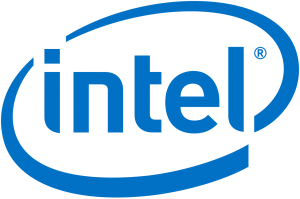Computing
Diamond cursor in Windows
This is a memo of the geeky tasks to perform first after purchasing a Windows 11 PC. It covers swapping Ctrl and CapsLock and setting the diamond cursor. Swapping Ctrl and Caps Lock Open the Registry Editor with regedit, navigate to HKEY_LOCAL_MACHINE → SYSTEM → CurrentControlSet → Control → Keyboard Layout, and create a new entry named Scancode Map by selecting Edit → New → Binary Value. Enter the following data: 00 00 00 00 00 00 00 00 03 00 00 00 1d 00 3a 00 3a 00 1d 00 00 00 00 00 The initial zeros on the left can be ignored. When entered, spaces are automatically inserted […]
Installing Intel oneAPI (ifort) on Ubuntu 22.04 LTS
This is translation of this article by ChatGPT. I installed Intel oneAPI Base Toolkit and HPC Toolkit (ifort) on Ubuntu 22.04 LTS of WSL2 of Windows 11 Pro for the purpose of numerical computation using Intel C compiler and Intel Fortran compiler. I referred to this. Intel compiler can be used free of charge. Also, it is very convenient because you can install it with apt. Installation of Intel oneAPI The official guide is here. Set up Intel's repository here. If it stops halfway, try pressing Enter. Enter your password when asked and press Enter. wget -O- https://apt.repos.intel.com/intel-gpg-keys/GPG-PUB-KEY-INTEL-SW-PRODUCTS.PUB | gpg --dearmor | sudo tee /usr/share/keyrings/oneapi-archive-keyring.gpg > /dev/null echo "deb [signed-by=/usr/share/keyrings/oneapi-archive-keyring.gpg] […]
GitHub Tips
This is a list of basic tips on GitHub. We plan to add more items. Importing a GitHub Repository You can import other public repositories. For example, you can import a public GitHub repository into a private repository in GitHub Organizations. Click the + in the upper right corner of the GitHub page, then click Import repository. Enter the required information. References Importing a repository with GitHub Importer
Install Intel oneAPI on Ubuntu 20.04 LTS
In order to use Intel C compiler and Intel Fortran compiler for numerical computation, Intel oneAPI Base Toolkit and HPC Toolkit (Intel Fortran) on Ubuntu 20.04 LTS of WSL2 of Windows 10 Pro were installed. This site (in Japanese) was referred. The Intel compilers are now available free of charge, and can be installed using apt, which is very convenient. Install the required drivers Install the required drivers by referring to here. # Add package repository sudo apt-get install -y gpg-agent wget wget -qO - https://repositories.intel.com/graphics/intel-graphics.key | sudo apt-key add - sudo apt-add-repository 'deb [arch=amd64] https://repositories.intel.com/graphics/ubuntu focal main' # Install run-time packages sudo apt-get update sudo apt-get install intel-opencl-icd intel-level-zero-gpu […]
Installing GMT 6 on Ubuntu 20.04 LTS
GMT 6 is a popular plotting tool in regional and earth sciences, and it is a great software to draw the most beautiful figures with print quality. This is a memorandum of the build and installation on Ubuntu 20.04 LTS on WLS2 of Windows 10 Pro. I referred to this site (in Japanese). You may be able to install it with apt, but it is easy to build and recommended in the official site. Install dependent packages The first step is to install dependent packages. If some package is already installed, it will be skipped. sudo apt update sudo apt upgrade -y sudo apt install -y build-essential cmake libcurl4-gnutls-dev libnetcdf-dev […]
Install Ubuntu 20.04 LTS on WSL2 of Windows 10
This is a memorandum of the installation of Ubuntu 20.04 LTS on WSL2 of Windows 10 Pro. It is assumed that WSL2 can be used. Get Ubuntu 20.04 LTS from Microsoft Store Go to the Microsoft Store, search for Linux, and find Ubuntu 20.04 LTS. There should be no confusion in the installation. When you register your user name, you will be asked to set a password, which you will enter when you run as root using sudo. It is convenient to pin it to the taskbar. Install packages Launch the Ubuntu 20.04 LTS terminal. After updating to the latest version, install the necessary packages. sudo apt update sudo apt […]
Change font color settings in Ubuntu terminal on WSL
I found it difficult to see some of the colors of the terminals on WSL2 Ubuntu 18.04LTS on Windows 10 Pro. So you can customize the text color. Install Windows Terminal Install from Microsoft Store. Register in the start menu. Start Windows Terminal Start Windows Terminal from the Start menu, then Windows PowerShell terminal will be launched. Click on the downward-facing symbol to the right of the "+" on the right of the tab to open the menu. Click on Settings in the menu, edit it (Append "colorScheme": "One Half Dark",) as follows: { "guid": "{c6eaf9f4-32a7-5fdc-b5cf-066e8a4b1e40}", "hidden": false, "name": "Ubuntu-18.04", "colorScheme": "One Half Dark", "source": "Windows.Terminal.Wsl" }, Color setting using […]
Making vim (vi) text color easier to see on WSL-Ubuntu
Comments in .bashrc hard to see I'm using WSL-Ubuntu session of MobaXterm on Ubuntu 18.04LTS on WSL, but when I open .bashrc with vi (vim), comments are hard to see. So make the text color easier to see. Referring to this site (in Japanese), let's introduce a color scheme of molokai to make it easier to see. Installing molokai Start a terminal, create vim's personal setting directory .vim in the home directory, install molokai, and open .vimrc using vi. $ mkdir .vim $ cd .vim $ mkdir colors $ git clone https://github.com/tomasr/molokai Cloning into'molokai'... remote: Enumerating objects: 148, done. remote: Total 148 (delta 0), reused 0 (delta 0), pack-reused 148 […]
Working on GitLab by mirroring open source model
Clone open source model to GitLab Taking an ocean model ROMS as an example, let's consider the best practice of operating the ROMS repositories by cloning (not forking) the original ROMS repository to GitLab, where the mirroring is set to automatically import the update of the original repository. Please refer to this article for the settings up to this point. I will create and operate my own devel branch to avoid changing the repository cloned from the original repository on GitLab. Now the remote repository is GitLab cloning (mirroring) the original ROMS repository; local repository is operated using GitBash on Windows 10 Pro and Git on Supercomputer ITO. Final workflow […]
Git for Windows
Install Install Git for Windows on Windows 10 Pro and manage version control with Git Bash. It is assumed that the compilation and execution will be done on Ubuntu 18.04 LTS on WSL on Windows 10 Pro. Therefore, the linefeed code should always be in Linux format. This linefeed code stuff is a trap for beginners, so be careful. Download Git for Windows from here and start installation by double-clicking. Basically, the default is OK, but in the question about line endings appearing nearly at the end (Configuring line ending conversions), click the third option below. This allows you to work while always maintaining the Linux linefeed code. Checkout as-is, […]





